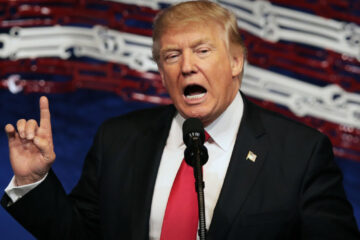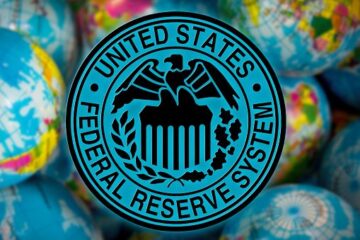When President Donald Trump imposed tariffs in 2018, stocks wobbled and the S&P 500 finished the year down 6.24%.
Then the index surged a total of nearly 50% over the following two years.
And now another wave of tariffs is in the offing.
💰 Stay ahead of the markets: Subscribe to TheStreet’s free daily newsletter💸
On Feb. 1, less than two weeks into his second term, Trump signed executive orders imposing 25% tariffs on imports from Canada and Mexico and 10% on goods from China.
After negotiations, the tariffs on Canada and Mexico were deferred. Mexico agreed to deploy 10,000 national guard troops to its northern border to curb drug trafficking, while Canada agreed to launch a $1.3 billion border-security plan, including a “fentanyl czar” and a joint strike force with the U.S.
Still, the duties on China took effect at 12:01 a.m. EST Feb. 4. Soon after, China announced retaliatory tariffs on select American imports.
Stock investors reacted to the tariffs: The S&P 500 index lost 0.76% on Feb. 3.
And now the latest: Effective March 12 Trump intends to impose 25% duties on imported steel and aluminum. No exceptions, the White House says.
Most economists say that tariffs imposed on imports will prompt companies to raise shelf prices for consumers, increasing inflation.
Will this round of tariffs have the same pressuring effect on the stock market as it did seven years ago?
‘Tariffs have had more bark than bite,’ financial researcher Tom Lee says.
Veteran Wall Street analyst delivers 3-word message on tariffs
Tom Lee, head of research for Fundstrat and the equity research firm’s founder, says the market overreacted to the Trump tariffs and advises investors to “buy the dip.”
Lee is a Wharton graduate who correctly predicted the market rally in 2024. He has been analyzing stocks on Wall Street since the early 1990s.
The tariffs for Mexico and Canada, which surprised many investors, are “probably negotiating tactics around the drug war and tightening the border, and it’s been effective,” Lee said.
Related: Morgan Stanley resets interest rate cut forecast after tariff tussle
“It’s a drug war, not a trade war. … [There’d] likely be an overreaction just like DeepSeek last week,” he said, adding that the tariffs “have had more bark than bite, meaning they’ve proven to be opportunities for investors to buy,” according to CNBC.
Lee also said Trump might well remove the tariffs on Mexico and Canada before May, but he might impose tariffs on the European Union and increase the tariffs on China.
Where will the market go from here?
Mark Newton, Fundstrat’s head of technical strategy, said “the market’s a lot healthier than what many people would think.”
“Technically speaking, the market actually looks quite healthy to me. There’s been no break of any sort of meaningful uptrends,” he said. “This whole fear of tariffs really has not affected the market almost one iota in terms of technical structure.”
Earnings season is progressing, with six of the Magnificent 7 stocks having already reported. Nvidia is set to report Feb. 26.
“It’s been a good earnings season so far,” Lee said, though he noted that the Mag 7 hasn’t been a major driver of gains. “In fact, they’ve been a drag on the S&P 500 this year,” he said on CNBC.
Related: Analysts reset Apple stock price targets amid earnings, Trump tariffs
Lee also said that small-capitalization stocks, though not yet a great outperformer, have the potential to “do well this year.”
“Outperformers this year come from financial, small caps, industrials,” he said.
The Institute for Supply Management manufacturing purchasing managers index came in at 50.9 in January, “and that’s very good news,” Lee said. “It’s the first move above 50 in over 26 months.”
The ISM rising above 50 is a bullish signal for industrials because it means manufacturing is growing.
“So we do wanna continue to buy the dip,” Lee said.
The S&P 500 index is up roughly 3% year-to-date.
Related: Veteran fund manager issues stark S&P 500 warning for 2025


